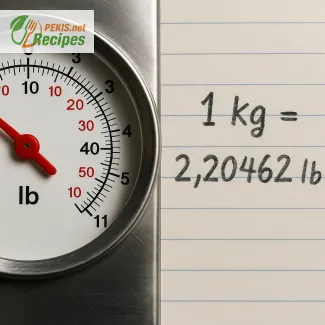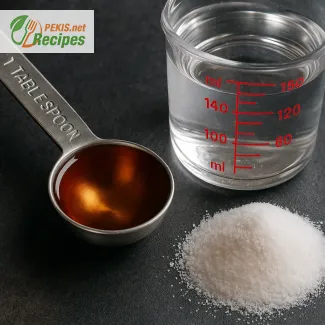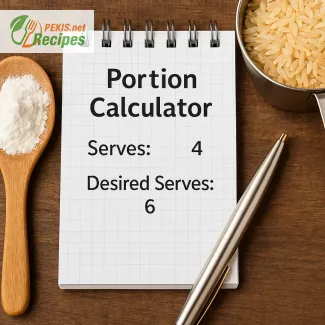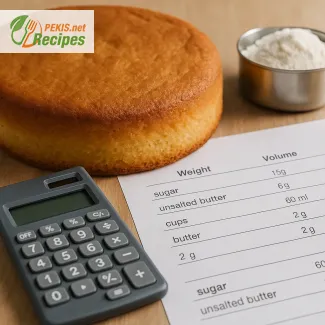
2 tablespoons equal 30 ml in most modern kitchen standards, though the US tablespoon measures slightly less at about 14.79 ml. Regional variations, like the Australian tablespoon at 20 ml, explain why conversions can differ in older recipes. Using milliliters ensures consistency, especially in baking, beverages, and sauces where precision matters. For practical use, always remember 2 tbsp = 30 ml, a reliable guide that makes recipes easier to follow across different countries and traditions.
Converting 2 tablespoons into exact milliliter measures
Understanding everyday kitchen conversions with precision
When a recipe calls for 2 tablespoons of liquid or dry ingredients, many cooks need to know the precise ml conversion. While tablespoons can vary slightly between regions—such as the US tablespoon (≈14.79 ml) and the metric tablespoon (15 ml)—the most widely accepted value for practical use is 1 tablespoon = 15 ml. This means that 2 tablespoons equal 30 ml, a measure frequently used in baking, cooking, and even in health or cosmetic formulations.
Why consistency in tablespoon to ml conversion matters
- Precise measurements ensure balanced flavors in recipes.
- In baking, accuracy affects texture, rise, and moisture content.
- When scaling recipes up or down, correct tbsp to ml conversions avoid cumulative errors.
- International recipes become easier to follow when converted into universal milliliters.
Quick reference for conversions
- 1 tbsp (US) ≈ 14.79 ml
- 1 tbsp (Metric, UK, AUS, EU) = 15 ml
- 2 tbsp (US) ≈ 29.57 ml
- 2 tbsp (Metric) = 30 ml
Historical context of tablespoon measures
The tablespoon as a unit has its roots in household utensils, evolving into a standardized measure only in the 19th and 20th centuries. Regional variations persisted—such as the slightly larger Australian tablespoon at 20 ml—but international cookbooks and modern kitchen scales gradually pushed toward the rounded 15 ml standard. This history explains why older recipes sometimes yield different results unless adjusted to the correct milliliter equivalent.
Storage and make-ahead guidance
For those preparing sauces, dressings, or marinades measured in tablespoons:
- Room temperature: Up to 2 days if the mixture is oil-based.
- Refrigeration: Extends shelf life to 1 week for most dairy or fresh-herb blends.
- Freezing: Up to 2 months when stored in airtight containers.
- Reheating: Warm gently at 150 °C for 8–10 minutes or until fully heated.
Why you’ll enjoy this guide
- Clear explanation of 2 tbsp to ml without confusion.
- Covers regional differences in tablespoon size.
- Adds historical background for better cultural understanding.
- Includes practical storage advice.
- Easy-to-read structure with quick reference points.
Semantic focus: tablespoons, milliliters, kitchen measurements
Cooking involves constant conversions: cups to grams, ml to ounces, and teaspoons to tablespoons. Among these, the shift from tablespoons to ml is one of the most practical, since liquids like oil, vinegar, and syrup are often listed in spoons rather than grams. Milliliters provide universal clarity, making recipes shareable across borders and easier to scale up for large gatherings.
Creative variations in interpreting 2 tbsp to ml
- Beverages: 2 tbsp of syrup (30 ml) changes the sweetness level significantly in cocktails or coffee drinks.
- Dressings: Adding 30 ml of olive oil instead of “2 tbsp” avoids mistakes when mixing vinaigrettes.
- Baking: Knowing that 2 tbsp equals 30 ml helps when swapping honey, molasses, or melted butter.
- Health mixes: Smoothie powders or herbal infusions become more reliable with exact ml equivalents.
Practical bullet insights for quick use
- Always check if your tablespoon follows the US (14.79 ml) or Metric (15 ml) size.
- For medical or cosmetic use, rely on ml conversions instead of spoons to guarantee accuracy.
- A digital kitchen scale with liquid measurement mode can prevent repeated miscalculations.
- Conversions also apply beyond food—cleaning solutions, skincare, or DIY crafts often use the same ratio.
Extending precision to other conversions
Once you know that 2 tablespoons = 30 ml, expanding this to other useful kitchen measures becomes easy:
- 3 tbsp = 45 ml
- 4 tbsp = 60 ml
- 8 tbsp = 120 ml (≈ ½ cup)
- 16 tbsp = 240 ml (≈ 1 cup)
By internalizing these simple numbers, you build an intuitive sense of measurement that minimizes the need for constant calculator use in the kitchen.
FAQ questionHow many milliliters are in 2 tablespoons?
In most kitchens, 2 tbsp = 30 ml. If you’re following US measures, 2 tablespoons are about 29.57 ml; with the metric tablespoon (15 ml) used widely in Europe, it’s exactly 30 ml. Both values are interchangeable in everyday cooking.
FAQ questionWhy do I sometimes see 14.79 ml for a tablespoon?
That figure refers to the US tablespoon (~14.79 ml). Many countries round to a metric tablespoon of 15 ml, which simplifies conversions. Know your spoon standard: US recipes lean closer to 29.57 ml for 2 tbsp, while metric recipes use 30 ml.
FAQ questionHow do I measure 2 tbsp without a tablespoon?
Use 6 teaspoons (since 1 tbsp = 3 tsp), pour 30 ml in a liquid cup, or fill 1/8 cup (half of a 1/4 cup). These swaps keep your volume consistent, especially helpful for dressings, marinades, and syrups.
FAQ questionDoes 2 tbsp of dry ingredients equal 30 ml?
Volume stays the same—30 ml—but weight changes with density. Cocoa, sugar, and salt weigh differently per spoon. For critical baking steps, use grams for dry ingredients; for liquids, the 30 ml rule is perfect.
FAQ questionWhat about the Australian tablespoon—does that change things?
Yes. The Australian tablespoon is 20 ml, so 2 Australian tbsp = 40 ml. When adapting Aussie recipes to metric/US kitchens, convert by volume (ml) rather than by spoons to avoid over- or under-measuring.
FAQ questionIs 2 tbsp the same as half of 1/4 cup?
Exactly. 1/4 cup = 4 tbsp, so 2 tbsp is half of 1/4 cup. In volume terms, that’s roughly 30 ml (metric) or 29.57 ml (US).
FAQ questionCan I safely substitute 30 ml for 2 tbsp in baking and drinks?
For liquids—oils, milk, water, syrups—yes: 2 tbsp ≈ 30 ml is a reliable swap. For intense or reactive ingredients (like leaveners, extracts, strong acids), stick to teaspoons or grams to keep flavor and chemistry in check.
PEKIS – professional chef and recipe developer with over 25 years of experience, specialized in European and international cuisine. For this topic, I’ve worked extensively with measurement conversions in both traditional baking and modern cooking, making sure that details like 2 tbsp to ml are always clear and practical for everyday use.



